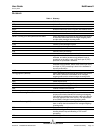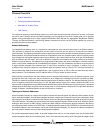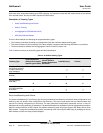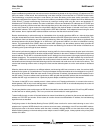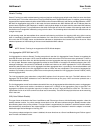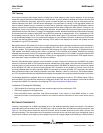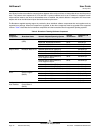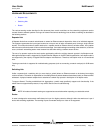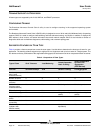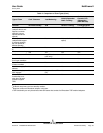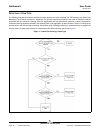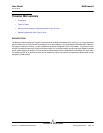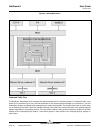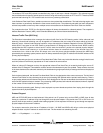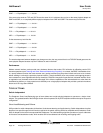
User Guide NetXtreme II
January 2010
Broadcom Corporation
Document ENGSRVT52-CDUM100-R Executive Summary Page 23
HARDWARE REQUIREMENTS
• Repeater Hub
• Switching Hub
•Router
The various teaming modes described in this document place certain restrictions on the networking equipment used to
connect clients to teamed systems. Each type of network interconnect technology has an effect on teaming as described in
the following sections.
Repeater Hub
A Repeater Hub allows a network administrator to extend an Ethernet network beyond the limits of an individual segment.
The repeater regenerates the input signal received on one port onto all other connected ports, forming a single collision
domain. This means that when a station attached to a repeater sends an Ethernet frame to another station, every station
within the same collision domain will also receive that message. If two stations begin transmitting at the same time, a collision
occurs, and each transmitting station must retransmit its data after waiting a random amount of time.
The use of a repeater requires that each station participating within the collision domain operate in half-duplex mode.
Although half-duplex mode is supported for Gigabit Ethernet adapters in the IEEE 802.3 specification, half-duplex mode is
not supported by the majority of Gigabit Ethernet adapter manufacturers. Therefore, half-duplex mode is not considered
here.
Teaming across hubs is supported for troubleshooting purposes (such as connecting a network analyzer) for SLB teams
only.
Switching Hub
Unlike a repeater hub, a switching hub (or more simply a switch) allows an Ethernet network to be broken into multiple
collision domains. The switch is responsible for forwarding Ethernet packets between hosts based solely on Ethernet MAC
addresses. A physical network adapter that is attached to a switch may operate in half-duplex or full-duplex mode.
To support Generic Trunking and 802.3ad Link Aggregation, a switch must specifically support such functionality. If the
switch does not support these protocols, it may still be used for Smart Load Balancing.
NOTE: All modes of network teaming are supported across switches when operating as a stackable switch.
Router
A router is designed to route network traffic based on Layer 3 or higher protocols, although it often also works as a Layer 2
device with switching capabilities. The teaming of ports connected directly to a router is not supported.



